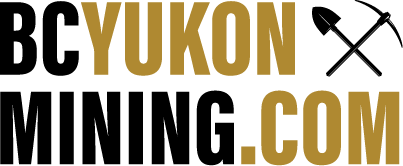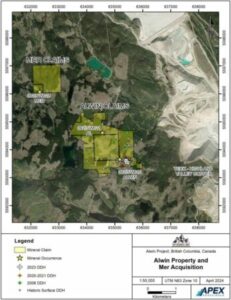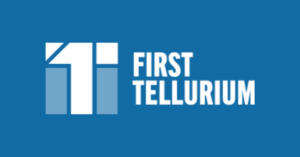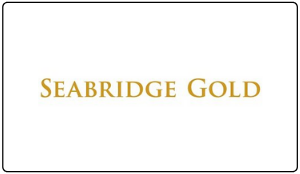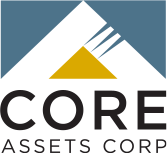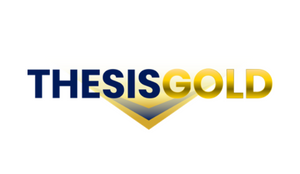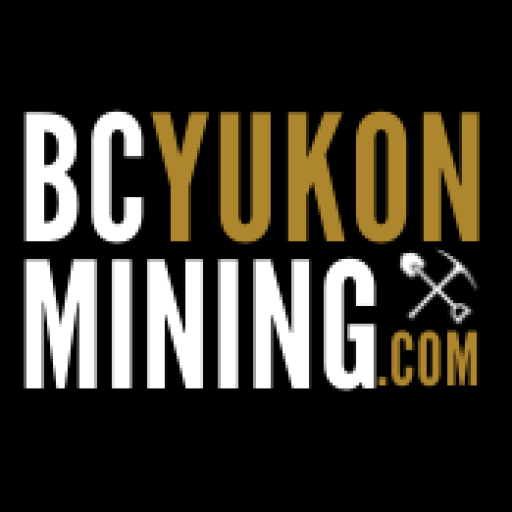Vancouver, BC, June 9, 2021 – Karus Gold Corp. (“Karus Gold” or the “Company”) announces additional high-grade gold drill results including 5.3 meters (“m”) of 10.2 g/t gold and 10 meters of 5.5 g/t gold in the Upper Zone of the FG Gold Project (“Project” or “FG Gold”), part of the Company’s 1,000 square kilometer (“km”) South Cariboo Gold District in British Columbia (Figure 1).
Highlights
- FG-20-382 extends the continuity of Upper Zone gold mineralization a further 100m down dip of historical drilling and includes:
- 42.2 m of 2.0 g/t gold at 122.8 m downhole, including
- 10 m of 5.5 g/t gold at 124 m downhole
- FG-20-383, drilled on the same section line, confirms the continuity of gold mineralization identified in hole FG-20-382 and includes:
- 48.2 m of 2.0 g/t gold at 127.6 m downhole, including
- 4.5 m of 7.7 g/t gold at 150 m downhole
- FG-20-385, confirms the continuity of Upper Zone gold mineralization identified in FG-20-382 and 383 a further 50 m along strike to the northwest and includes:
- 17.7 m of 3 g/t gold at 139 m downhole, including
- 5.3 m of 10.2 g/t gold at 150 m downhole
- Drilling further strengthens the understanding of the geology and highlights underground potential for FG Gold with 3.6 km of mineralized strike and unconstrained depth potential
- Project remains underexplored along a >20-km trend, providing many opportunities to expand the footprint of gold mineralization and for new discoveries on-strike and downdip
Karus Gold CEO Andrew Kaip comments, “Results from the 2020 drilling program continue to expand FG Gold mineralization on-strike and at depth, strengthening our thesis that FG Gold potential is much larger than the historical drilling suggest. The Company continues to find high-grade gold mineralized zones well outside of historical drilling, providing greater confidence in the structural interpretation and geologic model of the FG Gold deposit.”
Mr. Kaip continues, “Karus Gold is ramping up our exploration program for 2021 that is expected to include a minimum 15,000 m of drilling at FG Gold to demonstrate continuity of high-grade gold mineralization; and continue to expand the footprint of gold mineralization along strike and down dip of historical drilling.”
Exploration Program Details
Fifteen large diameter (HQ) oriented core drill holes for a total of 5,830 m were completed from June to October 2020. The drill program was designed to step-out up to 200 m downdip and test nearly 2 km along strike. The program is targeting the continuation of known gold-mineralized [orogenic] quartz veins further down dip and along strike within prospective and un-tested regions of the targeted [phyllite] host rock.
Assays from holes FG-20-382 to FG-20-390 are reported in this news release. A plan map of the drill collars and traces is included in Figure 2, including the location of the cross sections in Figures 3 and 4.
Due to coarse visible gold, metallic screening assays provide a much more representative sample versus conventional fire assays. Historical drilling and assays had limited and sporadic metallic screen analyses which may have underestimated historical gold grades. See below for more details on metallic screens.
Detailed Discussion of Results
Structural analysis and re-interpretation of historical drilling carried out prior to initiation of 2020 drilling by Karus Gold highlighted significant potential for expanding high grade gold zones below the extents of historical drilling. 2020 drilling was designed to test the hypothesis that high grade gold zones correlating to plunge lines within both limb and hinge zones and are extendable both at depth and along strike. Gold-bearing quartz vein swarms appear to be correlated with high-deformation areas and hinge/limb areas of locally folded strata. The orientation [azimuth] of the drilling was intended to delineate potential continuous ‘mineral-shoots’ within the mineralized zones.
The cross-section in Figure 3 (Section line A to A’ on Figure 2) shows the location of FG-20-382 and FG-20-383. Both holes intersected broad zones of gold mineralization that extended the Upper Zone a further 100 m down dip of historical drilling. FG-20-382 intersected 42.2 m of 2 g/t gold at 122.8 m downhole, including 10 m of 5.5 g/t gold at 124 m downhole. FG-20-383 returned 48.2 m of 2 g/t gold at 127.6 m downhole, including 4.5 m of 7.7 g/t gold at 150 m downhole.
The cross-section in Figure 4 (Section line B to B’ on Figure 2) shows the location of FG-20-385 which intersected 17.7 m of 3 g/t gold at 139 m downhole, including 5.3 m of 10.2 g/t gold at 150 m downhole. FG-20-385, confirms the continuity of Upper Zone gold mineralization identified in FG-20-382 and 383 a further 50 m along strike to the northwest.
Hole FG-20-388, located 400 m southeast of FG-20-382, intersected a broad interval of low-grade mineralization, including 13.4 g/t gold over 1 m confirming the location of Upper Zone gold mineralization identified by previous drilling.
Holes FG-20-387, FG-20-389 and FG-20-390 returned anomalous gold mineralization coincident with the interpreted trace of both the Upper and Lower zone.
Table of Significant Drill Results
| Drill Hole | Zone | From | To | Length1,2 | Gold Grade3 |
| (m) | (m) | (m) | (g/t) | ||
| FG20-382 | Upper | 122.8 | 165.0 | 42.2 | 2.0 |
| incl. | 124 | 134 | 10.0 | 5.5 | |
| FG20-383 | Upper | 13.3 | 17.6 | 4.3 | 1.8 |
| and | Upper | 46.2 | 48.2 | 2.0 | 14.5 |
| and | Upper | 127.6 | 166.5 | 38.9 | 2.0 |
| incl. | 150 | 154.5 | 4.5 | 7.7 | |
| FG20-384 | Upper | 106.3 | 121.9 | 15.5 | 0.9 |
| incl. | 108.64 | 112.5 | 3.9 | 1.7 | |
| FG20-385 | Upper | 82.5 | 83.74 | 1.2 | 9.4 |
| and | Upper | 139.0 | 156.7 | 17.7 | 3.3 |
| incl. | 142.3 | 147.6 | 5.3 | 10.2 | |
| FG20-386 | Upper | 31.7 | 32.7 | 1.0 | 6.9 |
| Upper | 129.8 | 145.5 | 15.8 | 0.8 | |
| FG20-387 | Lower | 287.5 | 289.5 | 2.0 | 3.7 |
| FG20-388 | Upper | 42.1 | 60 | 17.9 | 1.0 |
| incl. | 55 | 56 | 1.0 | 13.4 |
1. Karus Gold has not been able to determine true width yet due to complexity of the vein structures within the mineralized zones. The 2020 drill program was designed to better understand the geometry and how the mineralized zones are related. The orientation of individual quartz veins within the mineralized zones are quite variable. Reported widths are drill indicated core length and not true width, for the reasons above. Average grades are calculated with un-capped gold assays, as insufficient drilling has been completed to determine capping levels for higher grade gold intercepts.
2. Drilling data on the Lower Zone is currently limited and the true thickness and orientation of the zone is not firmly known. However, based on current data, it is estimated that intercept represents ~50%-65% of the true thickness of the zone.
3. Composites are calculated using a 0.3 g/t Au cutoff, incorporating no more than 7 m downhole dilution. Higher grade composite sections are calculated using a 1 g/t and 3g/t cutoff incorporating no more than 5 m downhole dilution. Screen metallic assay data is present as it is more representative of the true sample value due to the increased sample volume processed and the multiple gold size fractions analyzed.
Details of Metallic Screen Assaying
Metallic screen assays are often used in exploration when coarse or visible gold is present in the core as is the case at the FG Gold Project. Traditionally, fire assays are undertaken on 30-50 grams of pulverised sample. The metallic screen fire assay uses a larger sample (1 kilogram in Karus Gold’s case), with screening (to -106 micron) to separate coarse gold particles from fine material. After screening, two samples of the fine fraction are analyzed using the traditional fire assay method. The fine fraction is expected to be reasonably homogenous. The entire coarse fraction is assayed to determine the contribution of the coarse gold. This method helps reduce the erratic assay results often seen in the higher-grade zones found in “nuggety” gold deposits such as the FG Gold Project. All assays are performed at accredited independent commercial assay labs.
Regional Geology
The FG Gold property straddles the boundary between the Omineca and Intermontane tectonics belts of the Canadian Cordillera. The eastward emplacement of the Intermontane Belt onto the Omineca Belt along the Eureka Thrust Fault caused widespread regional metamorphism and structural deformation of both Belts. The regional scale, northwest trending, shallowly plunging, Eureka Syncline is the dominant resulting structure in the project area. Rocks in the core of the Eureka Syncline are comprised of basalt, augite porphyry flows, tuffs and volcanic breccias metamorphosed to a low grade; they are structurally emplaced onto metavolcanic and sedimentary rocks of the Quesnel Terrane. The Quesnel Terrane is recognized for its prevalence of copper, gold and molybdenum mines and showings such as those at Highland Valley, Boss Mountain, QR and Mount Polley.
Property Geology
The FG Gold Project is centrally located over the Eureka Syncline, strategically encompassing two limbs and the hinge zone of a gold-bearing meta-sedimentary rock unit of the Quesnel Terrane. The gold-bearing rock, a ‘knotted’ phyllite, is the host rock for gold mineralization over the 3 km strike length (see Figure 2). Surface mapping and geophysical inversion of airborne electromagnetic (EM) data suggests the knotted phyllite has a strike length of over 20 km with potentially thickened regions occurring in the Eureka Syncline hinge zone (see Figure 5).
Gold mineralization occurs in and is associated with development of quartz – Fe carbonate – muscovite – pyrite vein stockwork. The stockwork is best developed in the knotted phyllite unit. Stockwork zones locally concentrate in zones greater than 10 m wide and are dominantly stratabound. Fe-carbonate alteration and carbonate porphyroblasts development within the knotted phyllite unit is observed to extend well outside immediate areas of veining.
About the FG Gold Project
The FG Gold Project consists of 35 claims, totaling 13,008 hectares, in the eastern Cariboo region of central British Columbia, approximately 100 km east of Williams Lake. The project is at low elevation and accessible by forestry roads. FG Gold hosts an orogenic gold deposit on the northeast limb of the Eureka syncline. The southwest limb and hinge zone are underexplored. The Project also hosts copper-gold porphyry mineralization at the Nova Zone, discovered in 2018. Figure 5 highlights the 20 km trend of host rock expression at surface.
The 20 km trend is defined by gold in soils and geophysics that traces the mineralized rock group around the regional syncline. The Project has only been shallowly drilled where the mineralized rock group comes to surface. Past drilling averages only 93 m deep into a moderately dipping sedimentary host rock. Mineralization is open at depth and along almost the entire trend. Figure 5 is a regional view to the northwest of the host rock potential of the Eureka syncline and that extends through Eureka Ridge and highlighting the tens of kilometers of exploration potential relative to the area of historical drilling.
FG Gold is part of Karus Gold’s 1,000 km2 South Cariboo Gold District which hosts 110 km of the Eureka thrust structural trend (“Trend”) that drives gold mineralization in the District. The Trend is highly prospective for orogenic gold deposits, some of largest in the world, and includes the Company’s Gold Creek Project. The Cariboo region is accessible with local power, well developed road network and skilled local labour from multiple current and past operating mines.
More information on the NI 43-101 technical report dated December 16, 2020 “Technical Report on the South Cariboo Gold Property” filed under Karus Gold’s Profile on SEDAR at www.sedar.com and on Karus Gold’s website at www.karusgold.com.
About Karus Gold
Karus Gold is 100% owner of the 1,000 km2 South Caribou Gold District that includes the drill-stage FG Gold and Gold Creek projects in British Columbia. Karus Gold is supported by strategic investors Eric Sprott; and insiders, together with the management and Board, own approximately 59% of the basic shares outstanding.
Further information on Karus Gold and its assets can be found on the Company’s website at www.karusgold.com and at www.sedar.com, or by contacting us as info@karusgold.com or by telephone at (888) 455-7620.
On behalf of Karus Gold
”Andrew Kaip”
Chief Executive Officer
(647) 515-7858
Investor Relations
Nima Shafigh – Kin Communications
(604) 684-6730
KAR@kincommunications.com
